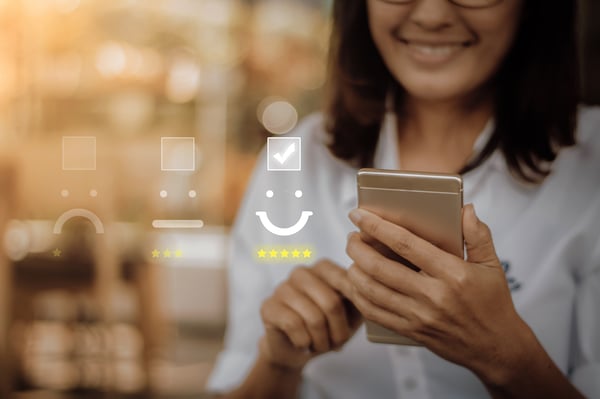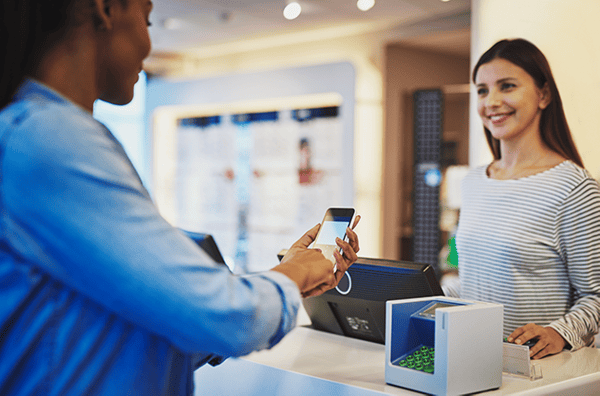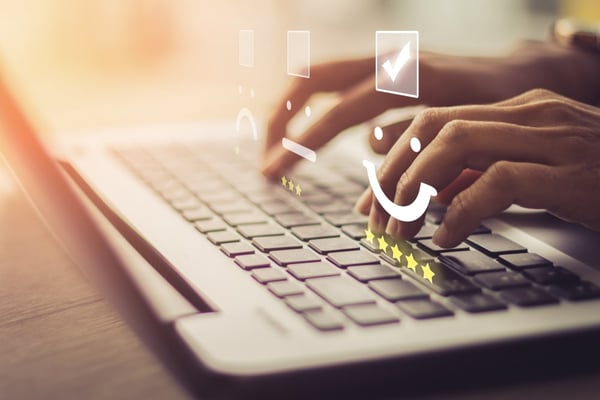- Blog Overview
- Knowledge
- Retailers Create More Personalized Shopping Experiences with Omnichannel Approach

Retailers Create More Personalized Shopping Experiences with Omnichannel Approach
Doug Caines |May 11 2022 | 6 min
Customers of all ages have become adept at buying online — especially over the past few years— finding it easier, quicker, and safer. However, this doesn’t negate the need for the brick and mortar. It simply fuels the urgency to design an elevated omnichannel approach.
Retailers must polish the entire shopping experience regardless of channel, making it seamless, consistent, and frictionless. Whether online or offline, the customer journey becomes unique, personalized, and tailored to best address each customer’s specific shopping needs.
An omnichannel approach meets the customers where they are and allows them to purchase the way they prefer. This integrated experience allows retailers to create a more custom and engaging journey that inspires greater brand loyalty.
A Unified Shopping Experience
Studies show that 61 percent of customers say they plan to spend more time shopping online. Between 2019 and 2021, three digital channels — brand websites and apps, retailer websites and apps, and online marketplaces — grew by almost 40 percent. Emerging channels, such as delivery apps, social media, and messaging platforms, grew by more than 20 percent.
Retailers must respond accordingly as more customers alter their buying habits. Even before COVID, many retailers’ systems and processes were lagging. According to that same report, on average retailers juggle 44 disparate front-end technology solutions. Even more alarming is that more than 55 percent of retail executives say their organization is still in the planning stage for a unified engagement platform.
Savvy retailers should understand what customers expect when shopping — online and in person — and deliver a unified experience. In other words, now is the time for retailers to ensure that they can deliver outstanding shopping experiences that result in brand loyalty and increased sales across all channels.
Let’s get Personal
Retailers must offer an all-in-one experience as shoppers ping-pong between digital and physical environments. When information is shared between channels, the experience is more consistent — no hiccups.
As lines are blurred, service and experience innovation must work together to keep the shopper engaged and loyal. Salesforce reports that 66 percent of consumers expect companies to anticipate their unique needs and expectations. And regardless of where they start or end their interactions, more than three-quarters of customers expect a single brand voice across all channels.
Using collected data, a retailer connects with a shopper through such things as personalized communications, specific offers, customized rewards in loyalty programs, one-on-one appointments, and contextual marketing efforts. With proper use of data, customers develop trust and a relationship with the retailer.
And just like brand efforts, personalization must take into account the full omnichannel experience. A good example of this in action could be a text notifying a shopper that an item they previously viewed online is now on sale in-store near their home. The customer gets relevant and personalized information that prompts action.
Connecting Insights
As I said, customers aren’t abandoning the brick and mortar. Often, they may go online, look at the product, find where it is in stock, and travel to the store to see it, try it on, or take it home immediately.
To ensure this consistent omnichannel experience, retailers must implement the right technology and capabilities. It’s about gaining and then connecting insights to create a more customer-centric experience.
A streamlined example of omnichannel could be as simple as implementing a click-and-collect option, where the purchase is made online and at a scheduled time the customer can pick up the order easily and without any waiting.
A more robust experience could be the customer scheduling a shopping appointment online, checking in at a kiosk upon arrival, meeting with a knowledgeable associate, and joining a virtual queue for checkout to reduce wait times.
In this scenario, employees act more as brand ambassadors than sales associates. With customer-specific data gathered from resources such as purchase history, appointments, check-ins, and loyalty programs, employees are more prepared and knowledgeable. The in-store visit is not only quicker and easier but often more lucrative. Additionally, a fully integrated system can also provide demand forecasting for better staffing as well as customer feedback solutions to monitor interactions.
A Singular, Unique Experience
Surveys show that 80 percent of shoppers will go elsewhere after just three bad experiences. And today’s shoppers have the whole world at their fingertips; they no longer must accept what’s just at the hometown mall. Whether a digital or physical storefront, customers expect a cohesive journey tailored to their unique needs.
With the right system that can integrate, track, and report on every touchpoint, retailers can develop a 360 end-to-end approach to meet customers’ needs. Through a personalized, omnichannel journey, retailers are able to more easily build a relationship, develop loyal customers, and reap the benefits by keeping them coming back across all their channels.









